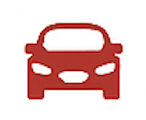Exploring Switzerland's Unique and Evolving Car Culture
A Nation of Precision: The Swiss Approach to Driving
Switzerland's car culture is deeply influenced by the nation's broader reputation for precision, orderliness, and safety. Swiss drivers are known for their adherence to traffic regulations, which are strictly enforced across the country. This results in one of the lowest road fatality rates in Europe, a reflection of not only efficient enforcement but also a deep-rooted cultural respect for rules and public safety.
Unlike in some countries where speed and modification are central to car culture, Swiss car enthusiasts often pride themselves on maintaining their vehicles in pristine, road-compliant condition. This includes regular vehicle inspections (known as 'MFK' or 'Motorfahrzeugkontrolle'), which are mandatory and rigorously implemented. The emphasis on maintenance contributes to the high resale value of used vehicles and the longevity of cars on Swiss roads.
Drivers in Switzerland also tend to be punctual and conservative behind the wheel. Aggressive driving is rare, and the use of the horn is minimal, often reserved strictly for safety. These behaviors mirror the country's wider social values: neutrality, order, and civic responsibility. As such, car culture in Switzerland is less about individualism and more about harmony and efficiency.
Highways, Vignettes, and Alpine Engineering
Switzerland's road infrastructure is globally renowned for its quality and integration with the mountainous landscape. The country is crisscrossed with well-maintained highways (Autobahnen), tunnels, and mountain passes that offer breathtaking views and seamless connections between urban centers and remote alpine communities. Some of the most famous tunnels in Europe, such as the Gotthard Road Tunnel, exemplify the feats of Swiss engineering.
To access the national highway system, drivers must purchase an annual toll sticker known as a 'vignette.' This simple but effective system funds highway maintenance and discourages short-term foreign traffic from exploiting the roads without contributing. The vignette system has become symbolic of Switzerland's approach to infrastructure: efficient, fair, and fiscally sustainable.
Mountain passes like the Furka, Grimsel, and Susten are popular among driving enthusiasts, especially during the summer when snow has cleared. These routes are not just functional but also recreational, attracting tourists and local drivers who enjoy the thrill of scenic, challenging drives. Many car commercials filmed in Europe feature these iconic Swiss backdrops.
Swiss Car Ownership: Preferences and Environmental Awareness
Car ownership in Switzerland reflects a blend of practicality and environmental consciousness. While the country has a high rate of vehicle ownership per capita, there is also widespread awareness of the ecological impact of personal transport. This is evident in the growing popularity of hybrid and electric vehicles, which are increasingly supported by government incentives and public infrastructure like EV charging stations.
Swiss buyers often prioritize reliability, fuel efficiency, and low emissions when selecting a vehicle. Brands like Volkswagen, BMW, and Audi are popular, though Japanese automakers such as Toyota and Subaru have a strong presence due to their reputation for dependability. Importantly, the size of vehicles tends to be smaller than in North America, partly because of narrow alpine roads and parking constraints in urban areas.
In urban centers like Zurich, Geneva, and Basel, there is a noticeable trend toward car-sharing services and multi-modal commuting. Many Swiss residents use a combination of public transit and personal vehicles, reserving car usage for weekends or trips outside the city. This balanced approach contributes to lower traffic congestion and supports Switzerland's commitment to sustainability.
Regulations, Licensing, and Driving Etiquette
Obtaining a driver's license in Switzerland is a rigorous process, reflecting the country's high standards for road safety. Prospective drivers must complete a theoretical exam, multiple phases of practical training, and a final on-road test. Additionally, new drivers undergo a probation period with further mandatory courses to reinforce defensive driving practices.
Speed limits are strictly enforced, with heavy fines and potential license suspension for violations. Traffic cameras are widespread, and the Swiss zero-tolerance policy for driving under the influence is well-publicized. Alcohol limits are low, and enforcement is consistent, reinforcing a culture where responsible driving is expected, not optional.
Driving etiquette in Switzerland is notably respectful. Right-of-way rules are strictly followed, and drivers generally use indicators and headlights appropriately. Roundabouts, which are common across the country, are navigated efficiently. The emphasis on mutual respect and consideration extends beyond city roads to rural and alpine routes, where slower vehicles often yield to allow overtaking in safe zones.
The Role of Car Events and Enthusiast Communities
Although Switzerland has historically banned motor racing on public roads since 1955, the country still has a vibrant community of car enthusiasts. Local clubs dedicated to classic cars, off-road vehicles, and specific marques often organize private events, scenic drives, and exhibitions. These gatherings highlight Switzerland's appreciation for automotive history and engineering, even in the absence of formal racing circuits.
Car shows such as the Geneva International Motor Show have long served as major fixtures in the international automotive calendar. Though the event has seen changes and disruptions in recent years, its prestige remains a testament to Switzerland's status in the global car industry. The show attracts manufacturers, journalists, and enthusiasts from around the world, helping to keep Swiss car culture connected to international trends.
In mountainous areas, events featuring off-road and 4x4 vehicles are particularly popular. These gatherings provide a venue for drivers to test the capabilities of their vehicles while exploring Switzerland's rugged terrain. Even though the events are carefully controlled to minimize environmental impact, they showcase the intersection of adventure, mechanical skill, and natural beauty that defines Swiss automotive enthusiasm.
